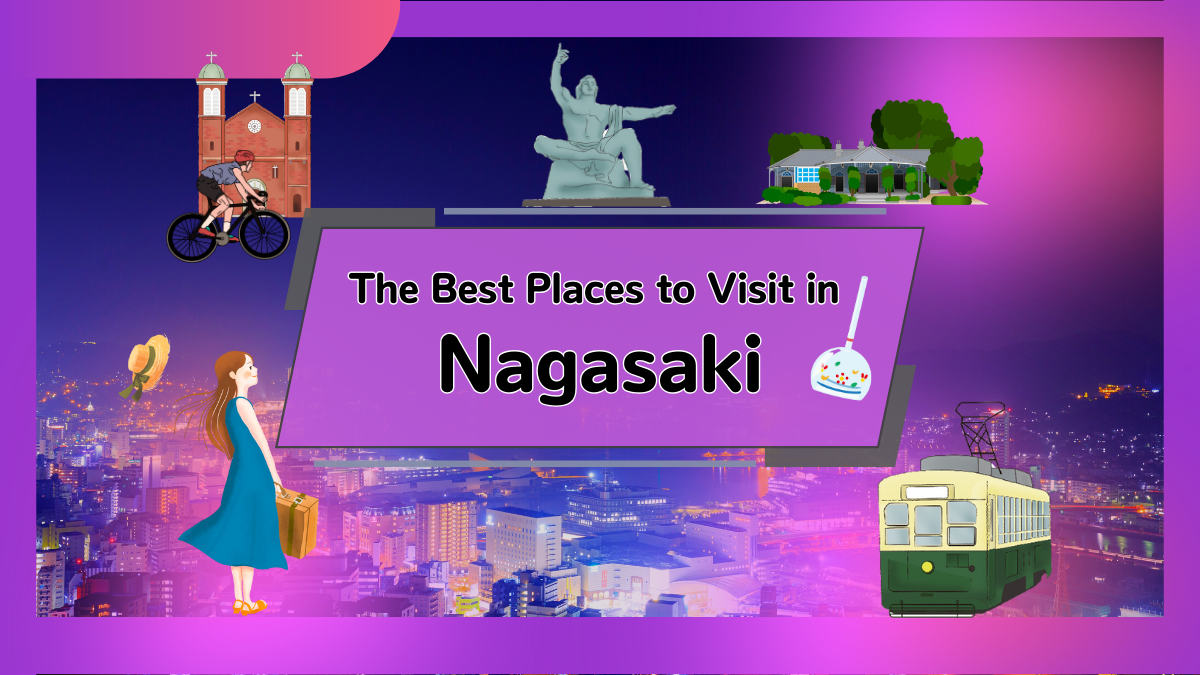Nagasaki, located on the island of Kyushu, is the capital of Nagasaki Prefecture. It was one of the first ports to be opened to foreign trade in the 16th century and became a major center for exporting Japanese goods to foreign countries.
On August 9, 1945, Nagasaki was the second city in Japan to be destroyed by an atomic bomb during World War II. The bombing killed around 70,000 people and left the city in ruins. However, Nagasaki has since been rebuilt and is now thriving with a rich history and culture.
How to get to Nagasaki?
By air: There are frequent flights between various cities in Japan and Nagasaki Airport. When you arrive, you can take a bus that will take you to the city center in about 45 minutes.
By train: The best way is to first take the JR Tokaido/Sanyo Shinkansen to Hakata Station in Fukuoka, and then transfer to the JR Kamome Limited Express to Nagasaki.
Best things to do in Nagasaki
Nagasaki Peace Park and Atomic Bomb Museum
(平和公園・長崎原爆資料館)
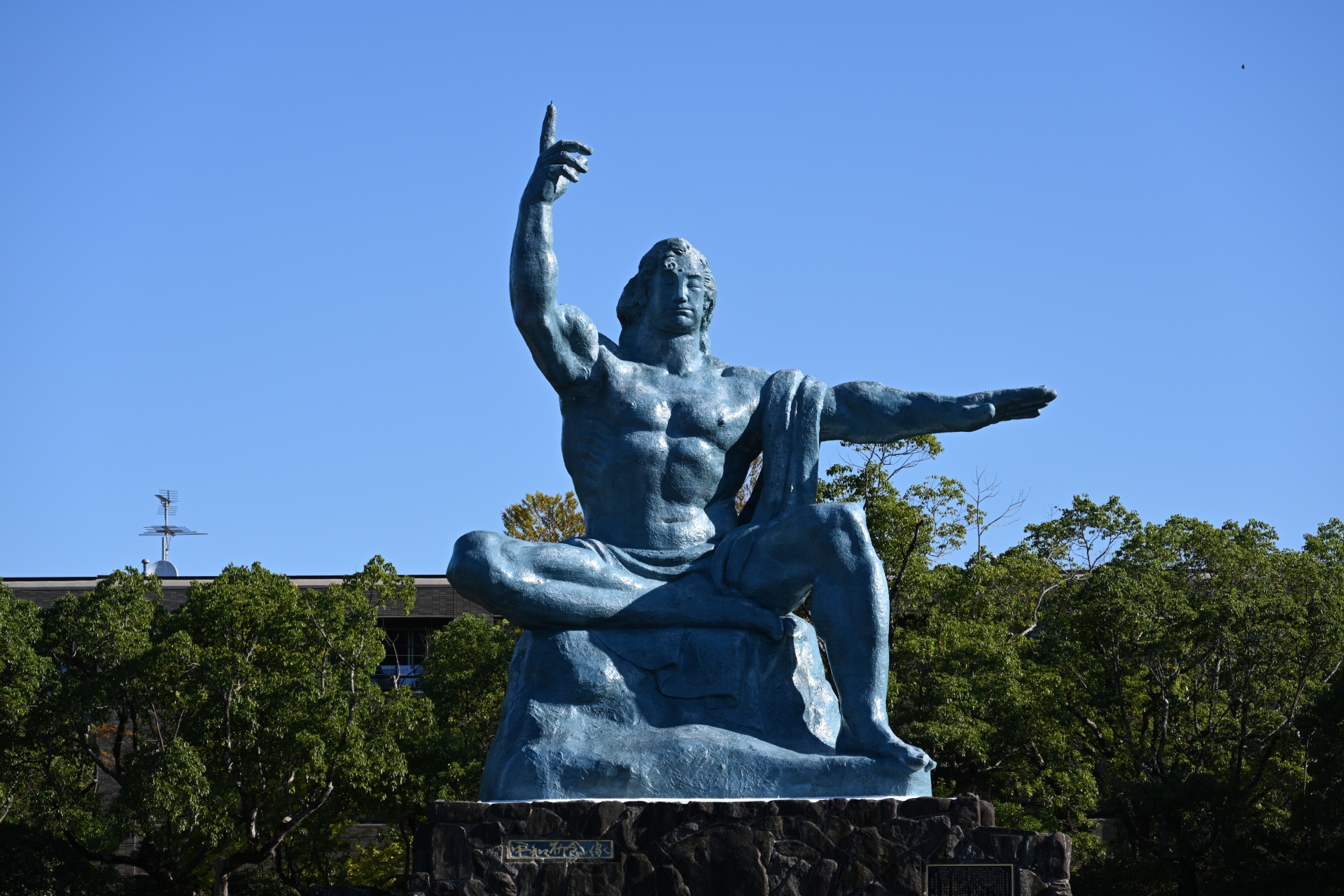
Nagasaki Peace Park was founded in 1955 and is dedicated to the victims of the atomic bombing of Nagasaki on August 9, 1945.
The park features several points of interest and contemplation, such as:
- The Peace Statue, designed by Seibo Kitamura, serves as an emblem of eternal peace.
- The Hypocenter site, with a monument that marks the exact spot where the atomic bomb was dropped.
- The Fountain of Peace was built in 1969 to commemorate the atomic bomb victims who died searching for sources of water.
Not far from the Hypocenter site are the Nagasaki Atomic Bomb Museum as well as the Nagasaki National Peace Memorial Hall, allowing people to remember and be educated about the horrors of war.
https://www.discover-nagasaki.com/en/sightseeing/130
Gunkanjima (端島)

Gunkanjima (also called Hashima) was formerly a coal mine located 20 km from Nagasaki Port. Constructed during the late 19th century, when coal was discovered there, the island had up to 5,000 residents. In 1974, the island was abandoned due to the depletion of its coal reserves.
Today, Gunkanjima stands as a popular destination for tourists. The island was called Gunkanjima (“Battleship Island”) due to its resemblance to a battleship.
Hashima (Gunkanjima) | Travel Japan (Japan National Tourism Organization)
Dejima (出島)
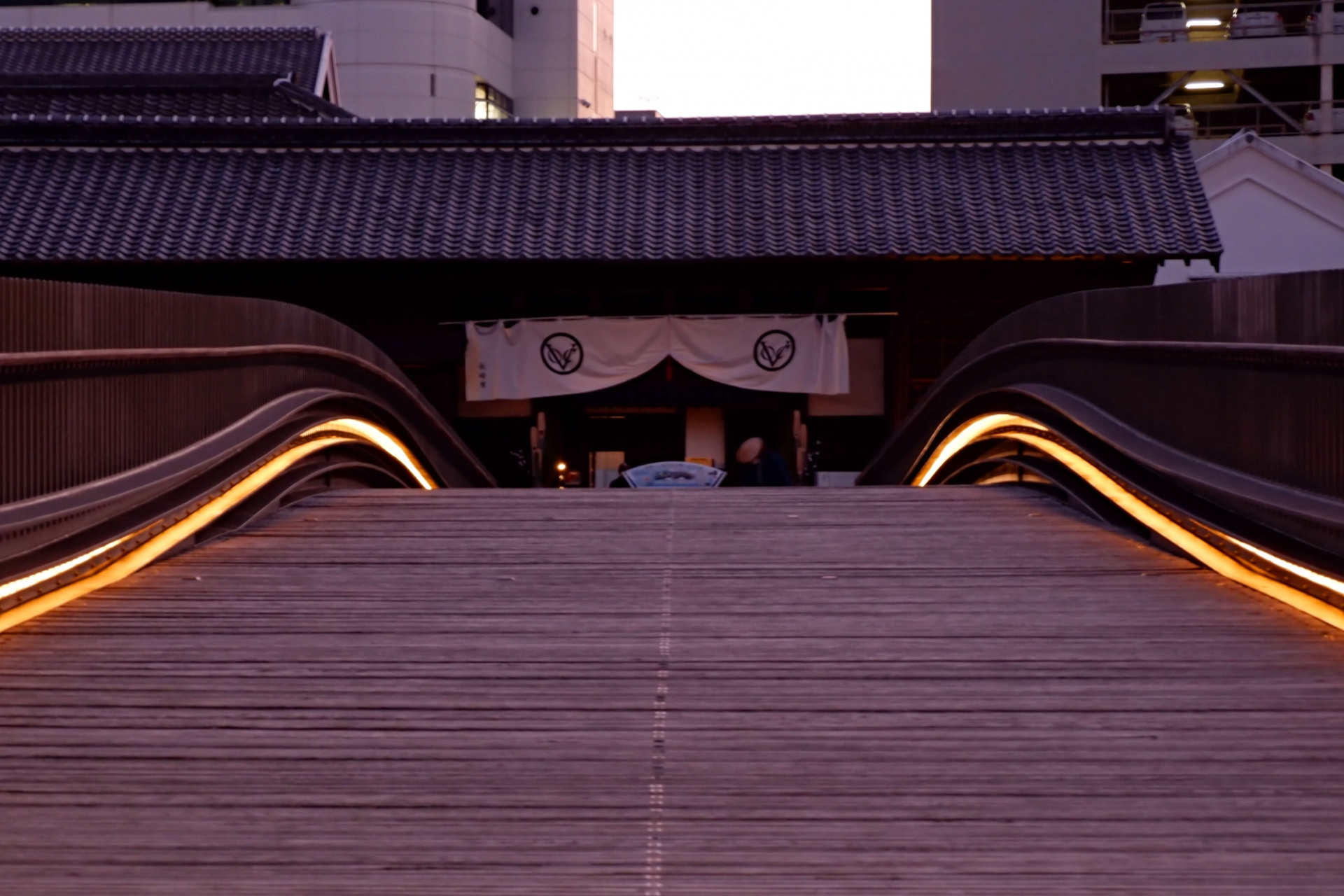
Dejima was initially built to isolate the Portuguese population and avoid the propagation of Christianity. Later, during the Edo period, it was used as a trading post for the Dutch.
This artificial island was the only place Westerners could trade until 1859. The island is now a museum that tells the story of the Dutch presence in Nagasaki.
https://nagasakidejima.jp/english/guide-to-dejima/
Glover Garden(グラバー園)
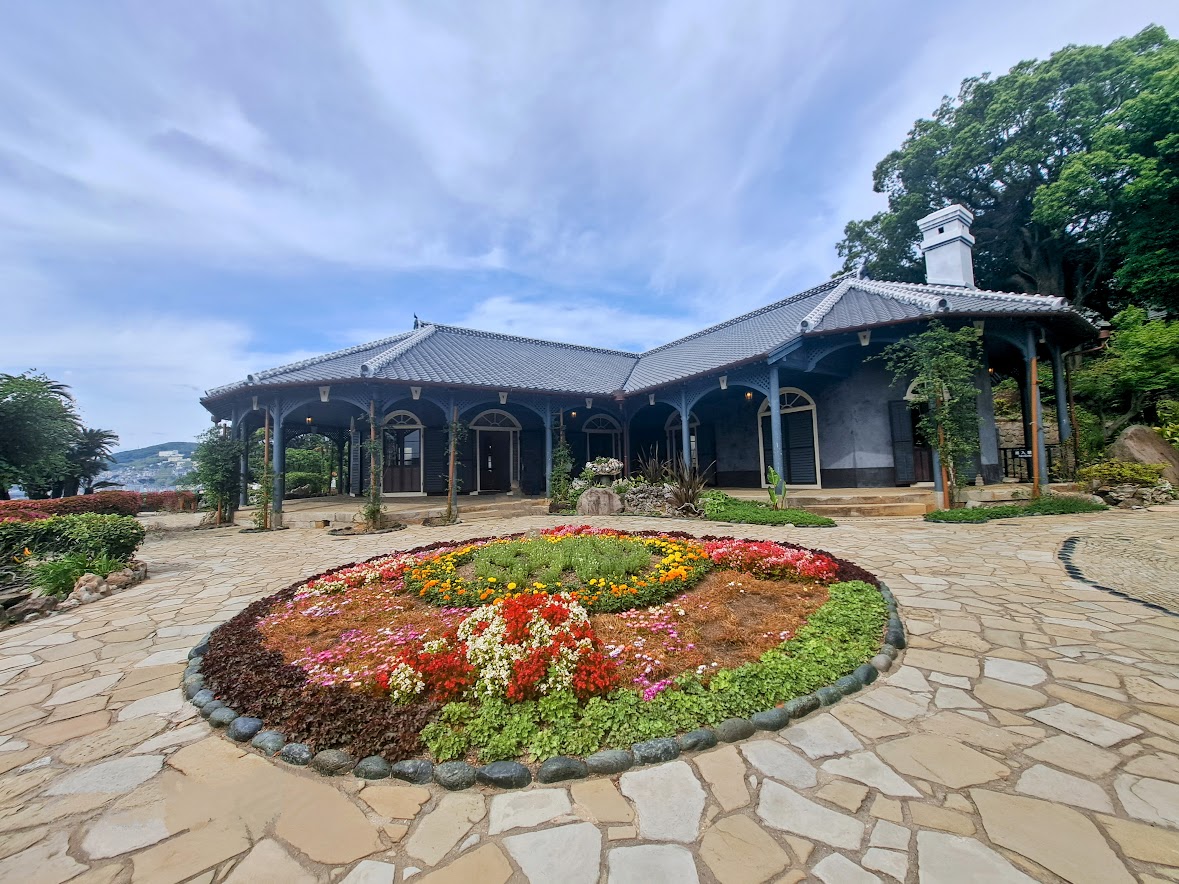
Glover Garden is an open-air museum that was created by Thomas Glover, a Scottish merchant who lived in Nagasaki in the 19th century. The garden is located on a hill overlooking the city and features a variety of plants and flowers, as well as many Western-style residences.
The most famous building is the Glover Residence, which was designated a World Heritage Site.
Today, the Glover Garden is a reminder of the time when Nagasaki was a center of Western trade and culture.
Glover Garden | Visit Kyushu
Sofukuji Temple(崇福寺)

Sofukuji Temple is a Buddhist temple founded in 1629 to serve Chinese people living in Nagasaki. It belongs to the Obaku school of Zen Buddhism.
The temple boasts many elements of interest, including two sites designated as national treasures: the Daiohoden (the Main Hall) and the Daippo-mon (the Gate).
Sofukuji Temple | See & Do | DISCOVER NAGASAKI/The Official Visitors’ Guide
Mount Inasa(稲佐山)
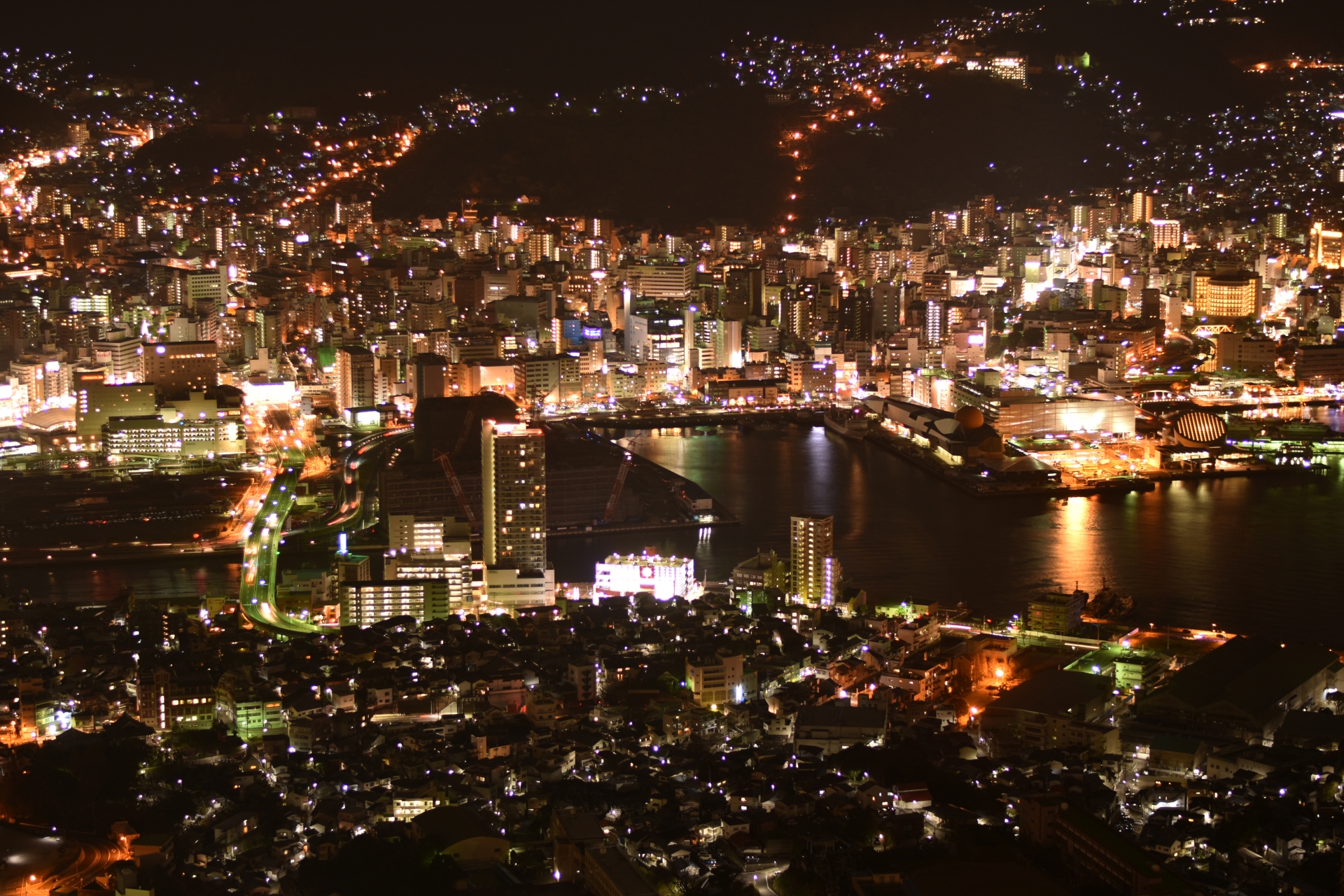
Mount Inasa is a 333-meter-high mountain that offers beautiful panoramic views of Nagasaki and the surrounding area.
The mountain top can be reached by ropeway or by car. The view from Mount Inasa has been ranked in the top 3 of the best night views, along with Mount Hakodate and Mount Rokko.
Introducing Nagasaki Ropeway & Inasayama
